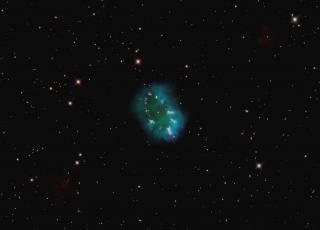Bibcode
Sale, S. E.; Drew, J. E.; Knigge, C.; Zijlstra, A. A.; Irwin, M. J.; Morris, R. A. H.; Phillipps, S.; Drake, J. J.; Greimel, R.; Unruh, Y. C.; Groot, P. J.; Mampaso, A.; Walton, N. A.
Bibliographical reference
Monthly Notices of the Royal Astronomical Society, Volume 402, Issue 2, pp. 713-723.
Advertised on:
2
2010
Citations
40
Refereed citations
32
Description
This study is an investigation of the stellar density profile of the
Galactic disc in the anticentre direction. We select over 40000 early A
stars from INT/WFC Photometric Hα Survey of the Northern Galactic
Plane (IPHAS) photometry in the Galactic longitude range 160° < l
< 200° close to the equatorial plane (-1° < b <
+1°). We then compare their observed reddening-corrected apparent
magnitude distribution with simulated photometry obtained from
parametrized models in order to set constraints on the anticentre
stellar density profile. By selecting A stars, we are appraising the
properties of a population only ~100 Myr old. We find that the stellar
density profile of young stars is well fit to an exponential with
length-scale of (3020 +/- 120statistical +/-
180systematic) pc, which is comparable to that obtained in
earlier studies, out to a Galactocentric radius of RT = (13.0
+/- 0.5statistical +/- 0.6systematic) kpc. At
larger radii, the rate of decline appears to increase with the
scalelength dropping to (1200 +/- 300statistical +/-
70systematic) pc. This result amounts to a refinement of the
conclusions reached in previous studies that the stellar density profile
is abruptly truncated. The IPHAS A star data are not compatible with
models that propose a sudden change in metallicity at RG = 10
kpc.
Related projects

Bipolar Nebulae
This project has three major objectives: 1) To determine the physico-chemical characteristics of bipolar planetary nebulae and symbiotic nebulae, to help understanding the origin of bipolarity and to test theoretical models, mainly models with binary central stars, aimed at explaining the observed morphology and kinematics. 2) To study the low
Antonio
Mampaso Recio